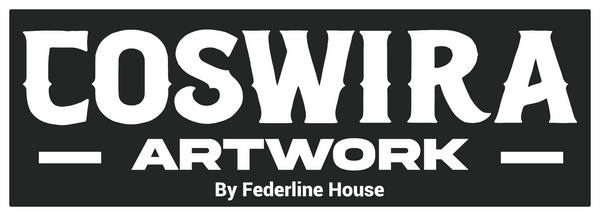Tips for Clean Cuts, Shaping, and Detailing Eva Foam for Cosplay Prop
Discover techniques for cleaner lines, smoother curves, and more professional-looking builds using basic foam craft skills.
If you want your EVA foam props to look crisp and polished, the secret is in the cutting, shaping, and detailing. Even the best pattern can look rough if your cuts are jagged or your foam edges are uneven. But with just a few simple techniques, you can make your builds look smooth, clean, and impressively professional — even if you're just starting out.
Here are some essential tips to help you improve your foam crafting skills step-by-step.
✂️ Use a Sharp Blade — Always
One of the biggest mistakes beginners make is using a dull blade. A dull knife will drag through the foam, leaving torn or uneven edges. For clean cuts:
- Use a sharp utility knife or hobby blade.
- Replace or sharpen your blade frequently — after every few feet of cutting if possible.
- Use light, controlled pressure rather than forcing the blade through.
Pro tip: Try slicing in multiple shallow passes for thicker foam instead of trying to cut through in one go.
📐 Cut on a Flat Surface
Cutting on a soft or uneven surface can cause wobbly cuts and inconsistent lines. Always use a self-healing cutting mat or a firm, smooth surface. This keeps your cuts straight and helps extend the life of your blade.
A **metal ruler** or guide is also useful for straight lines, especially when cutting armor panels or long edges.
🔥 Use Heat for Shaping
A heat gun is your best friend for shaping EVA foam. Once heated, foam becomes soft and flexible — perfect for creating curves or forming custom shapes.
- Heat gently in a sweeping motion; don’t hold the gun in one spot.
- Once warm, shape the foam with your hands, over a form, or using a curved surface.
- Hold the shape until the foam cools and sets.
For smoother results, heat both sides of the foam evenly.
🪚 Beveling and Smoothing Edges
Want cleaner seams and more polished details? Learn to bevel your edges. This means cutting your foam at an angle so that pieces join neatly without visible gaps.
You can bevel using:
- A sharp blade, cutting at an angle.
- A Dremel rotary tool with a sanding drum for smoother bevels.
Always wear a dust mask when sanding foam, as the particles can be harmful to breathe.
🧩 Plan Your Seams and Layers
One key to cleaner builds is thinking ahead before you cut. Instead of trying to force a shape from one solid piece, break it into cleaner, layered components.
- Use thin foam (like 2mm) to add surface details, trims, and panels.
- For complex shapes, build a base form and layer additional shapes for depth.
This not only makes cutting easier but also gives your prop a more dynamic, professional finish.
🖊 Mark Lightly and Cut Inside the Line
When tracing your template onto foam, use a silver marker or pen with a fine tip. Always cut just inside the line to ensure your pieces match the pattern size exactly. Avoid deep scoring that could show up after sealing or painting.
🧠 Take Your Time and Test First
Great results don’t come from rushing. Give yourself time to test cuts, heat settings, and glue-ups on scrap foam before working on the real piece. You’ll learn faster and avoid wasting materials.
✅ Final Thoughts
With the right tools and a few smart techniques, you can take your foam props from rough to refined. Clean cuts, smooth shaping, and thoughtful layering are the foundation of pro-level cosplay builds — and they’re all skills you can develop with just a little practice.
The more you build, the better you’ll get. And the best part? Every prop you make teaches you something new.
🛠️ Ready to Start Your Build?
Browse our collection of high-quality, printable cosplay prop patterns – designed for foam crafting, easy to scale, and beginner-friendly. From swords and armor to full prop sets inspired by your favorite characters, we’ve got everything you need to bring your next cosplay to life.
